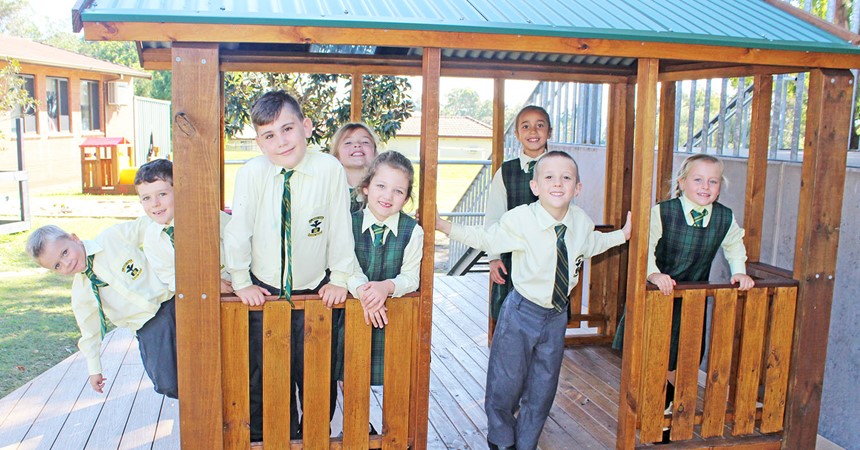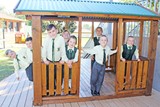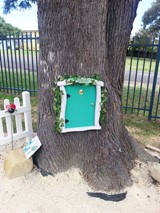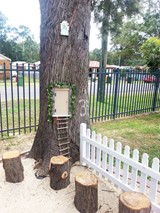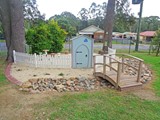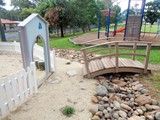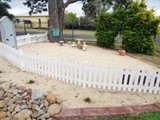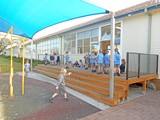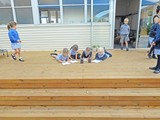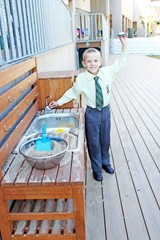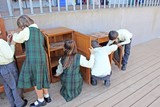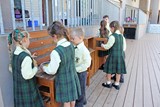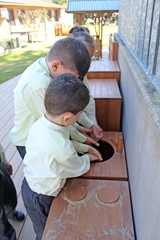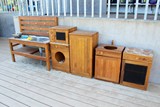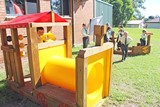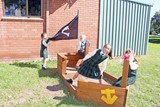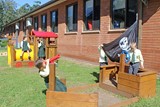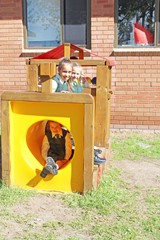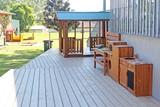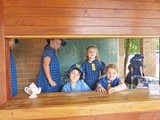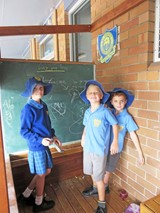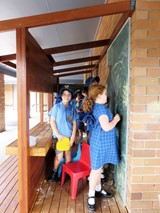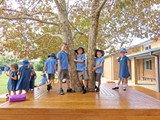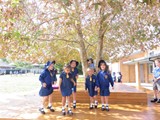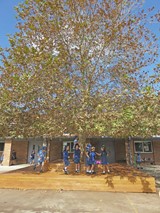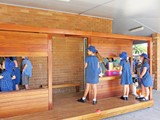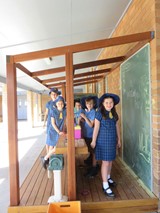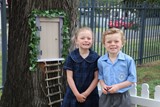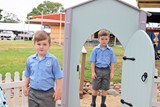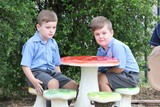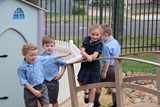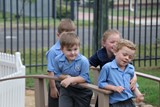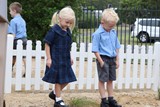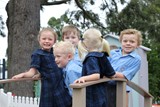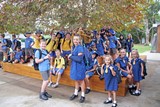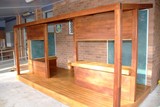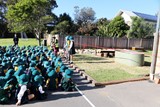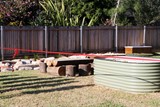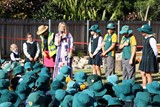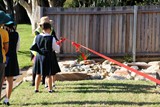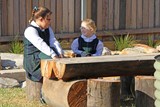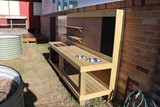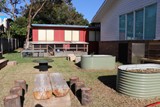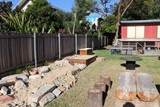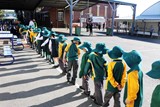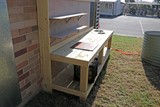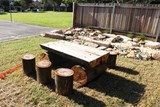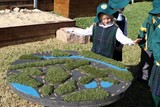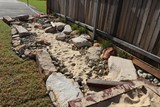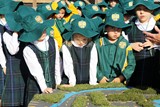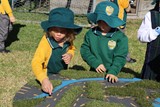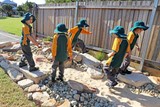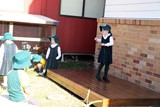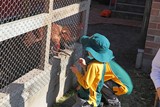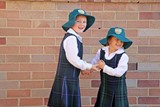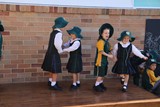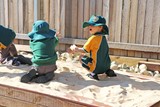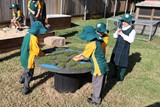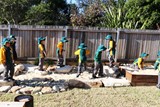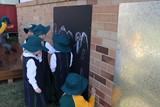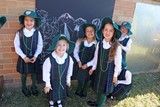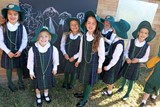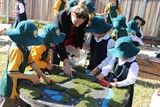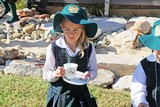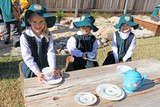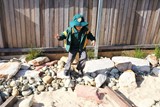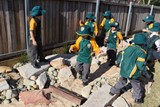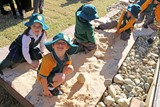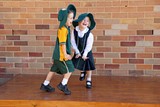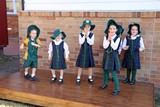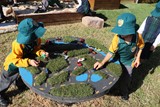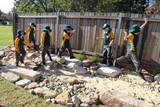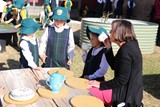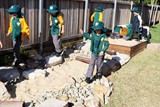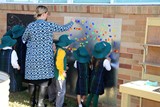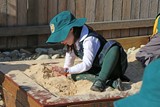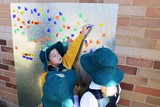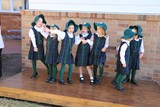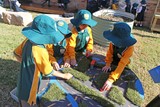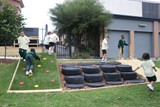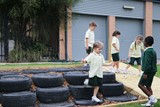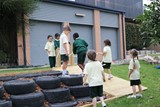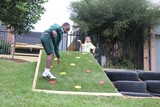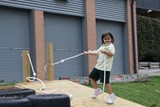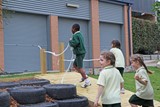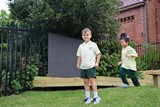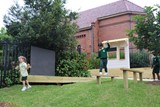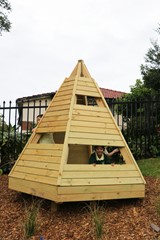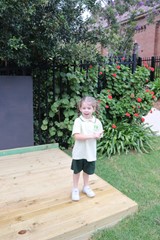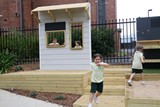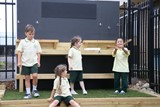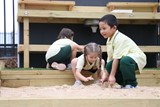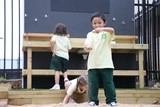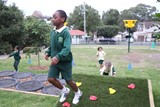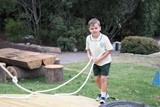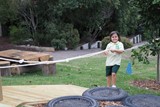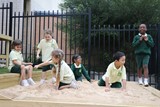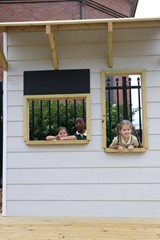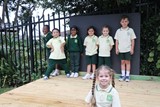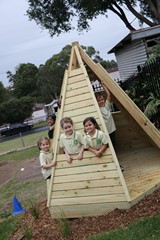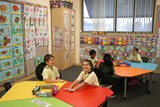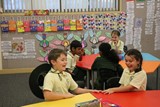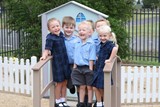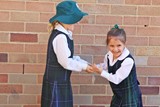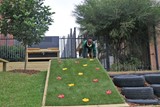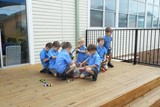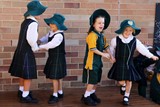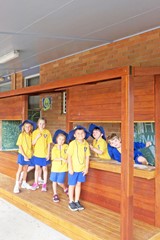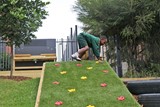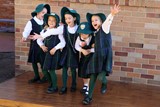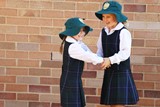There is a growing desire and need for interesting and dynamic outdoor play spaces that contribute to children’s wellbeing, happiness and creativity and also develop independence.
“An environment that is inviting, interesting and pleasant to be in can be explored with all the senses,” says Catholic Schools Office Early Learning Project Officer, Kim Moroney, who is an expert in the critical role physical environments play on children’s early learning experiences and development.
“Such an environment allows children to learn together, take risks, imagine, collaborate, make decisions, self-regulate and socialise. It enables the children to truly connect to nature.”
Kim also speaks to the objective of designing children’s outdoor environments. “The goal is to use the landscape and vegetation as the play setting and nature as much as possible as play materials. The use of natural features invites open ended interactions, literacy, numeracy, problem solving, spontaneity, risk taking, exploration and discovery,” says Kim.
St Joseph’s Primary School, Merewether, has undergone the first stages of development of its new outdoor playground.
The new environment is a multipurpose space that is open-ended and provides play equipment that offers endless possibilities. The use of natural timber has seen the formation of a two-tiered raised wooden platform under the shade of a tree and a wooden shopfront that allows the children’s imaginations to run wild as they play ‘shops’ and ‘schools’, role play, build a cubby or simply sit and have a chat.
“While the traditional style of playground still has a place for organised games, it is the unstructured environment of this new creative space that encourages children to think independently, to solve problems, build self-esteem and develop creative thinking,” says teacher, Felicity Peart.
Principal, Peter Treloar also speaks to the importance of these playgrounds saying, “Children need to be given the opportunity to socialise in a non-competitive environment. They are growing up in a ‘timetabled’ world where their every move is scheduled. Children need a place to explore, where they can play passively, use their imagination, express themselves and interact with their peers.”
St Patrick’s Primary School, Wallsend, is the most recent school to have transformed its traditional playground into an interactive and creative play space to cater for the increasing student population in the infant years. The new play area features climbing equipment, a shop front, stage, teepee, mud kitchen, sandpit, fairy garden, a dried creek bed and bridge, grassed areas and seating.
“Our new play space will provide many benefits for the children’s health and wellbeing, allow opportunities for creative, interactive and imaginative play, encourage role playing and provide a safe, fun and collaborative environment where students can develop skills of perseverance, resilience and risk-taking while building positive relationships with their peers,” says principal, Grant Diggins.
Students at Holy Family Primary School, Merewether Beach, have recently begun exploring their new play space that features natural products and recycled materials including seating areas created from tree stumps, a dry creek bed, a small sandpit, a car track, a mud kitchen complete with a painted stove top, sink and recycled pots and pans, a performance stage, magnetic letter board, fairy garden and chalkboard.
“As schools, we need to show our children that creative play and learning doesn’t need a plethora of electronic devices, loud noises and screaming colours,” says principal, Sidonie Coffey. “Learning can take place when our imagination is stimulated through open spaces, natural colours, fibres, materials and the beauty of nature.”
Three other diocesan primary schools have also recently enhanced their school’s play areas.
Students at St Brigid’s Primary School, Raymond Terrace, have been cooking up a storm in their brand new kitchen, creating new adventures in their cubby house and exploring the mechanics of their pirate ship and train.
At Holy Spirit Infants School, Abermain, a spectacular fairy garden enhances children’s imaginative play and invites exploration and discovery with nature.
Students at St Therese’s Primary School, New Lambton, are also making use of their new outdoor area, experimenting with different levels of play.
Future plans, designs and ideas are in the mix and will be implemented in the near future at St Paul’s Primary School, Rutherford, St Joseph’s Primary School, Gloucester and Corpus Christi, Waratah.
“Children need tools, open space, challenges and opportunities to control and manipulate the environment so as to imprint themselves on the landscape,” says Kim.
“Loose parts, sand, water, manipulatives, props and naturally found objects are essential tools for these spaces. The environment interacts with, is modified by and takes shape in relation to learning experiences of the children and of the adults in a constant dialogue.”
